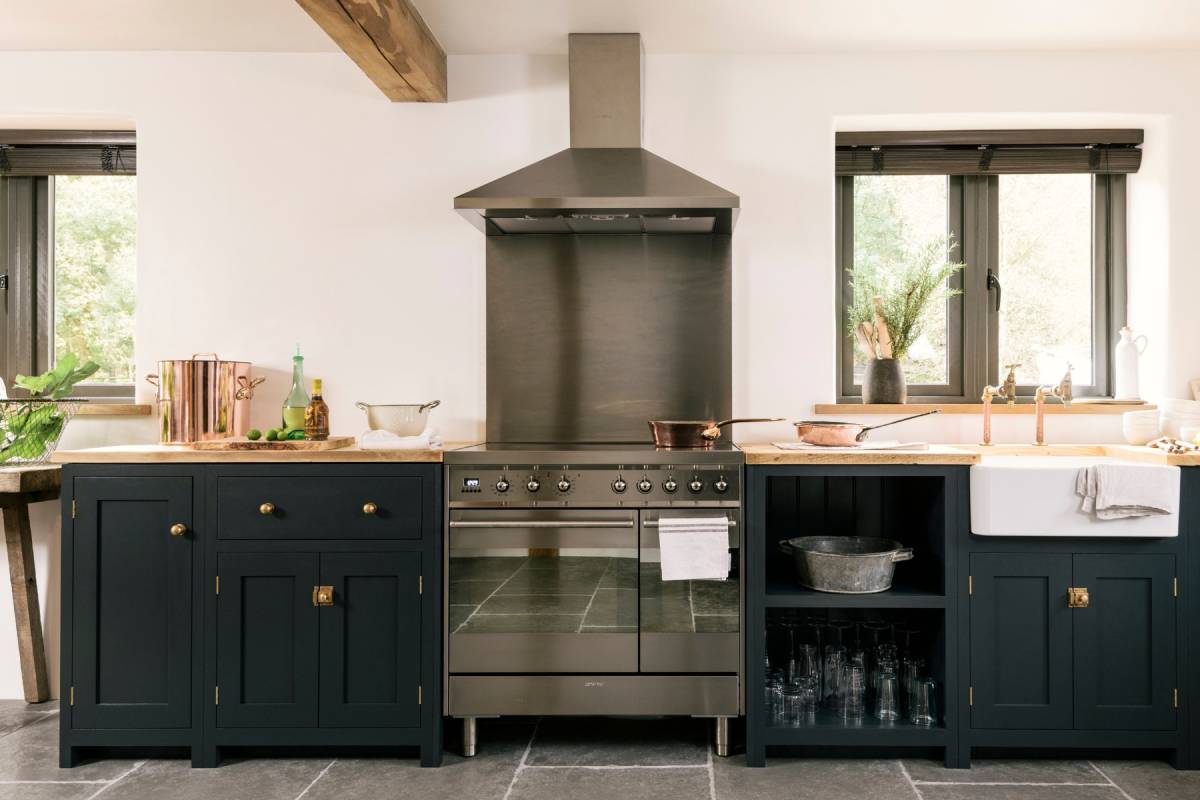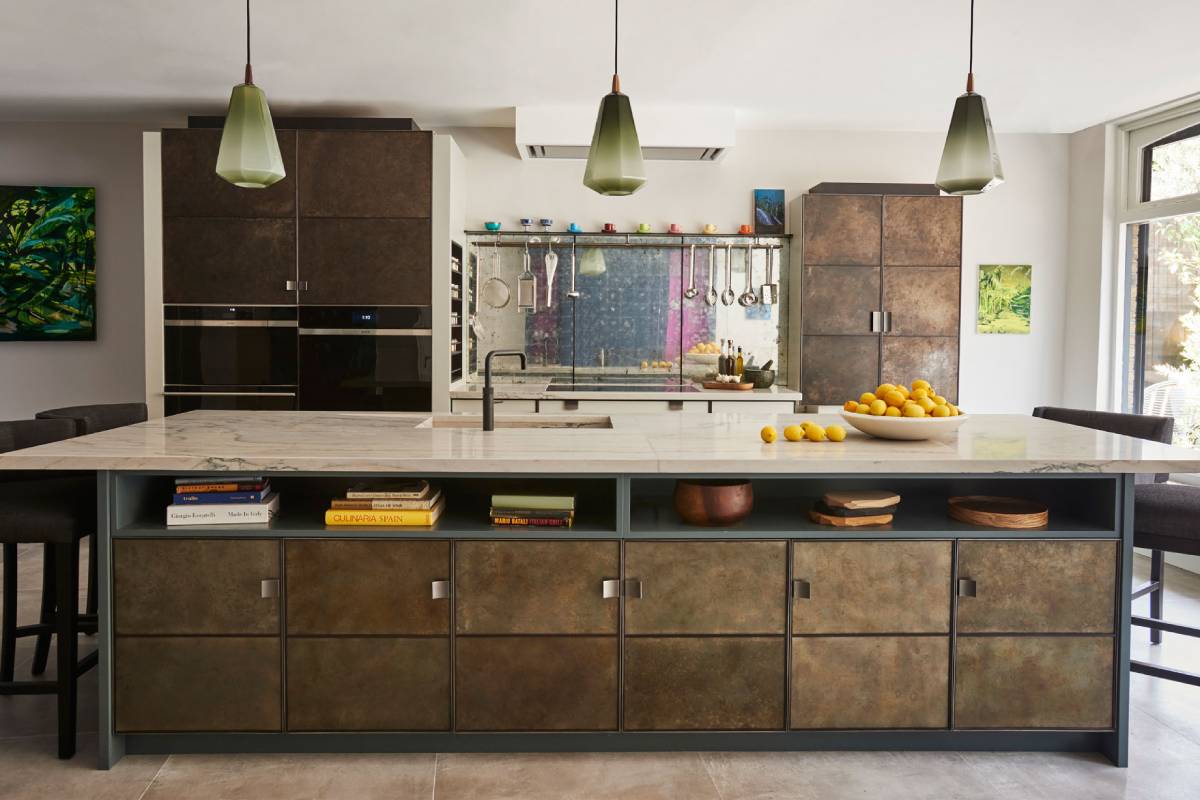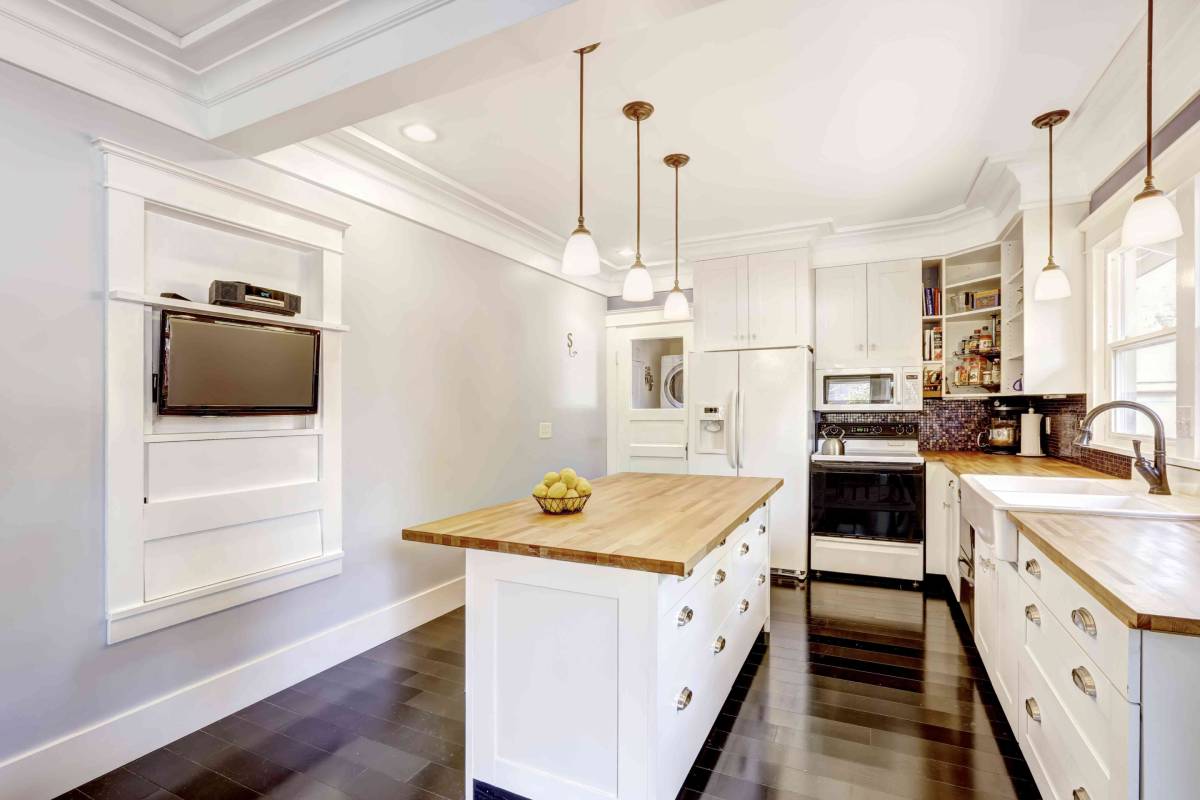Designing your kitchen involves choosing between a freestanding or integrated layout – a decision that significantly influences the overall look and feel of the space.
In this discussion, we’ll focus on three main points: flexibility and design freedom, customization options, and practical considerations.
What is a freestanding kitchen?
A freestanding kitchen is a versatile and trendy approach to kitchen design that deviates from the traditional built-in model. In simple terms, it refers to a kitchen layout where the components, such as cabinets, islands, and appliances, are not permanently fixed to the walls or floor. Instead, they stand alone as separate units, providing a more flexible and customizable space.
The hallmark of a freestanding kitchen is its mobility and adaptability. Unlike built-in kitchens, which are often more rigid in their design and layout, freestanding kitchens allow for easy rearrangement and modification. This flexibility is advantageous for those who love to experiment with their living spaces or individuals who frequently move homes.
One of the primary features of a freestanding kitchen is the standalone cabinets. These cabinets come in various styles, sizes, and shapes, and they can be arranged according to personal preferences. You can choose cabinets with open shelving, drawers, or a combination of both, giving you the freedom to showcase your culinary essentials or hide them away neatly.

The freestanding kitchen concept extends to kitchen islands as well. Islands are not fixed to the floor or attached to the countertops, making them movable. This allows you to reposition the island based on your current needs, whether you require extra counter space for food preparation or a casual dining area for entertaining guests.
In addition to cabinets and islands, freestanding kitchens often incorporate standalone appliances, such as ovens, refrigerators, and dishwashers. This departure from the traditional built-in appliances provides a more eclectic and personalized look to the kitchen. Plus, it makes maintenance and repairs easier, as each appliance can be accessed individually without disrupting the entire kitchen setup.
The aesthetic appeal of freestanding kitchens is another reason for their popularity. They offer a more open and airy feel, avoiding the closed-off look that can sometimes result from wall-to-wall cabinets. This design choice can make a kitchen appear larger and create a welcoming atmosphere.
Furthermore, freestanding kitchens are ideal for those who enjoy a mix-and-match approach to interior design. You can experiment with different materials, colours, and styles for each standalone component, adding a touch of personality to your kitchen. This customization aspect allows homeowners to express their creativity and create a space that truly reflects their tastes.
What are the benefits of a free-standing kitchen?
A freestanding kitchen offers a variety of benefits that make it a popular and practical choice for homeowners.
Here’s a breakdown of the advantages of having a freestanding kitchen:
- Flexibility and Easy Rearrangement:
- Freestanding kitchens provide a high level of flexibility in terms of layout and design.
- Components like cabinets and islands are not permanently fixed, allowing for easy rearrangement to suit changing needs.
- Ideal for individuals who enjoy experimenting with different setups or for those who frequently move homes.
- Customization Options:
- Standalone cabinets come in various styles, sizes, and shapes.
- Homeowners can choose cabinets with open shelving, drawers, or a combination based on their preferences.
- The ability to mix and match components allows for a highly personalized and unique kitchen design.
- Movable Kitchen Islands:

- Kitchen islands in freestanding kitchens are not fixed to the floor or attached to countertops.
- Islands can be easily moved to create additional counter space for food preparation or to serve as a casual dining area.
- This adaptability enhances the functionality of the kitchen, catering to different activities and occasions.
- Standalone Appliances:
- Freestanding kitchens often feature standalone appliances like ovens, refrigerators, and dishwashers.
- Each appliance can be accessed individually, simplifying maintenance and repairs without disrupting the entire kitchen setup.
- The option to place appliances where they are most convenient adds to the efficiency of the kitchen space.
- Aesthetic Appeal and Open Feel:
- The design of a freestanding kitchen contributes to a more open and airy feel.
- Avoiding the closed-off look of wall-to-wall cabinets can make the kitchen appear larger and create a welcoming atmosphere.
- The visual appeal of standalone components adds a touch of uniqueness and charm to the overall kitchen design.
- Ideal for Mix-and-Match Styling:
- Freestanding kitchens are perfect for those who enjoy a mix-and-match approach to interior design.
- Homeowners can experiment with different materials, colours, and styles for each standalone component, allowing for creative expression.
- This customization aspect enables individuals to create a kitchen space that truly reflects their personal tastes.
- Accessibility and Maintenance:
- Standalone cabinets and appliances are more accessible for cleaning and maintenance.
- There’s no need to reach into tight corners or dismantle an entire structure for repairs.
- This convenience makes it easier to keep the kitchen in top-notch condition.
In summary, a freestanding kitchen offers the advantages of flexibility, customization, and aesthetic appeal. With movable components, a mix-and-match design approach, and practical features like standalone appliances, this kitchen style caters to the dynamic needs and preferences of modern homeowners.
Whether you prioritize adaptability, personalization, or a unique look, the benefits of a freestanding kitchen make it a compelling choice for many.
What is the difference between a freestanding and an integrated kitchen?
Understanding the difference between freestanding and integrated kitchens is crucial when planning your kitchen layout. Let’s break down the distinctions in a simple and easy-to-understand manner.

1. Definition
- Freestanding Kitchen:
- In a freestanding kitchen, components like cabinets, islands, and appliances are standalone units.
- They are not permanently fixed to the walls or floor, providing flexibility in arrangement and design.
- The freestanding concept allows for easy customization and mobility.
- Integrated Kitchen:
- An integrated kitchen, on the other hand, features built-in components that are seamlessly incorporated into the overall design of the kitchen.
- Cabinets, appliances, and other elements are installed to create a unified and cohesive look.
- Integrated kitchens often prioritize a sleek and streamlined appearance.
2. Flexibility vs. Seamless Design
- Freestanding Kitchen:
- Known for its flexibility, a freestanding kitchen allows you to rearrange components as needed.
- Offers a more eclectic look with the ability to mix and match different styles and materials.
- Suited for those who enjoy a dynamic and changeable kitchen space.
- Integrated Kitchen:
- Emphasizes a seamless and integrated design, providing a polished and cohesive appearance.
- Built-in components create a uniform and consistent aesthetic.
- Ideal for individuals who prefer a clean and organized look without the option for frequent rearrangement.
3. Customization Options
- Freestanding Kitchen:
- Standalone cabinets come in various styles, sizes, and shapes, offering extensive customization options.
- Homeowners can choose different designs for each component, contributing to a unique and personalized kitchen.
- Integrated Kitchen:
- Customization in integrated kitchens often revolves around finishes, handles, and subtle design elements.
- While there is some flexibility, the overall design is more fixed compared to freestanding kitchens.
4. Layout and Accessibility
- Freestanding Kitchen:
- The layout is more adaptable with movable islands and standalone appliances.
- Components are easily accessible for cleaning and maintenance.
- Integrated Kitchen:
- Layout is predetermined during the design and installation phase, offering less room for changes.
- May require more effort for cleaning and maintenance due to fixed structures.
5. Cost Considerations
- Freestanding Kitchen:
- Often considered more budget-friendly as standalone components can be acquired gradually.
- Allows for cost-effective upgrades and changes over time.
- Integrated Kitchen:
- Generally involves higher upfront costs as built-in components are part of a cohesive design.
- Changes or upgrades may require more significant investments.
Conclusion
As we conclude this exploration into the realms of freestanding and integrated kitchens, the decision between these two design philosophies is undoubtedly a personal one. The freestanding kitchen beckons with its promise of flexibility, design freedom, and an eclectic canvas for creative expression.
In contrast, the integrated kitchen stands as a testament to seamless elegance, meticulous planning, and a timeless aesthetic. Your choice hinges on whether you desire a kitchen that evolves with your whims or one that stands as a harmonious sanctuary of order.
Try considering flexibility, customization options, and practical aspects, including the unique charm of a shaker kitchen, and you’ll craft a kitchen that not only meets your needs but also reflects your personal style.



